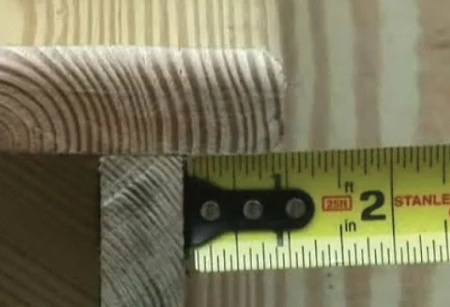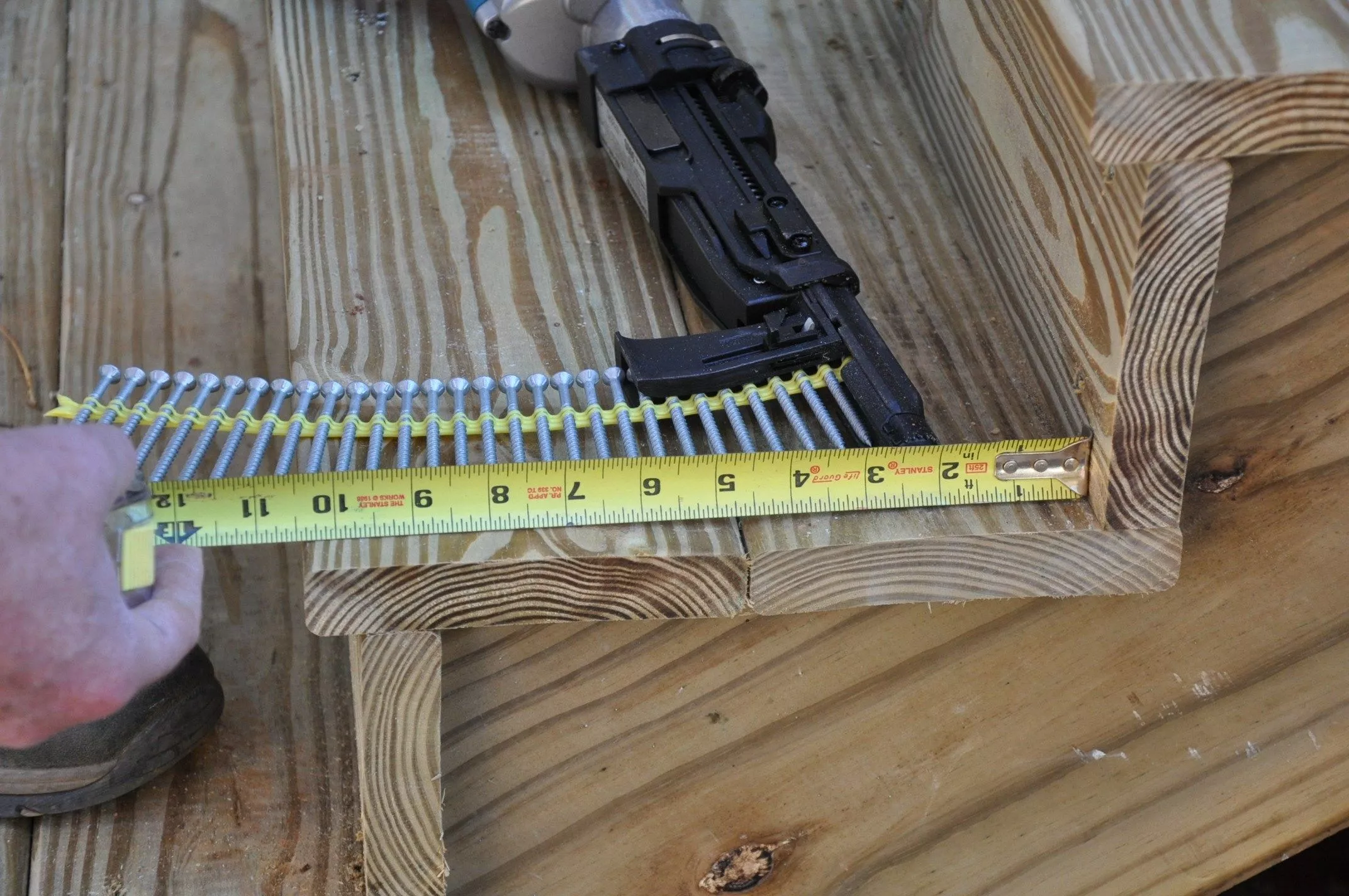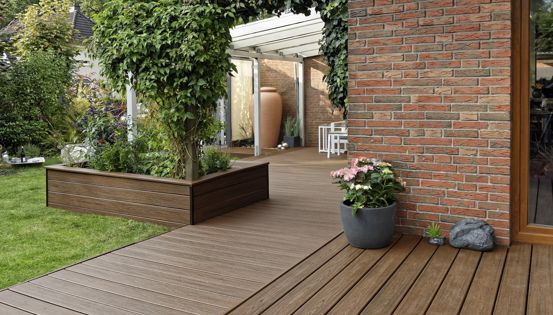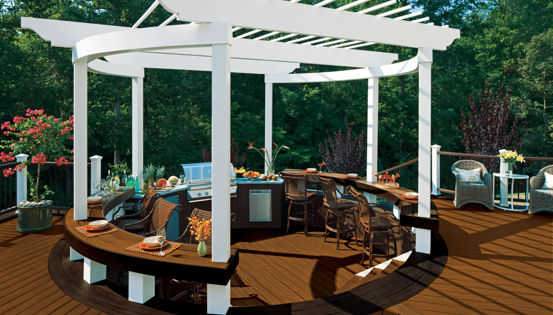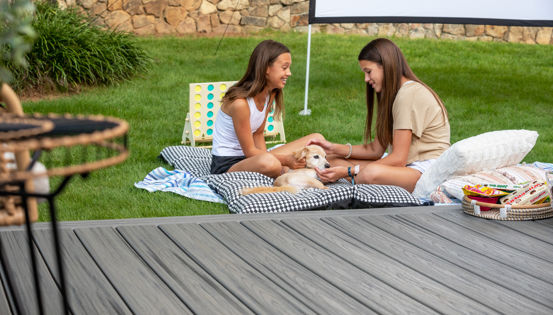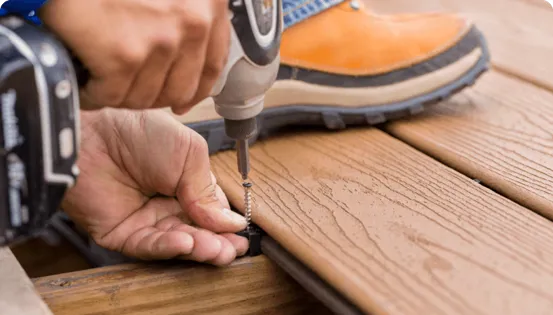When building your stairs, it usually works well to use two deck boards to build the stair tread. The tread is the part of the stair that you walk on and is held in place by fasteners mounted to the horizontal surface of the stair stringers. When installing the tread, many builders project the front end of the deck boards over the stringer by the thickness of the riser as well as about an inch as a nose. This projected step helps protect the riser from becoming loosened over time. It is a nice detail that adds definition to the stairs. It is usually most attractive to use a radius edge or bull nose face for the stair nosing. Most 5/4 wood decking is sold as radius edge. If you are using 2x6 that has a square corner, you can use a router to round over the edge.
